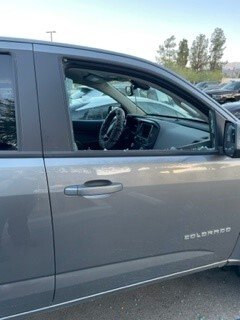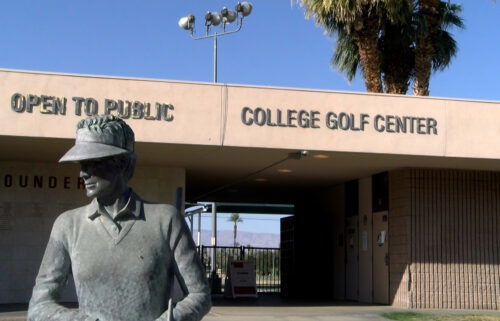Dog owner arrested in Palm Desert after leaving pet in car during 102-degree day
A pet owner was arrested after allegedly leaving their dog inside a car while temperatures reached 102 degrees in Palm Desert.
The Animal Service Officer, Rebekah Reyes said " So when I arrived on scene, I noticed a truck with a lot of people around it and there was a dog inside the truck. All the windows were rolled up. All the doors were locked. It was about 100 degrees at that time".
Sue Harvey is the Good Samaritan who broke the car window to free the dog from the hot truck, She has been a pet sitter for 20 years and she said she had to do something because the dog was in the hot vehicle way too long. In her statement, she said "Dogs are at the mercy of us, we must protect them. They cannot stand the heat just as we cannot" and then said, "The dog was in the car for a least an hour before I was able to break the window”.

Sue Harvey's actions are supported by a 2016 law — called the right to rescue.
The incident happened on the evening of June 1 in the parking lot of the Palm Desert mall. According to the Department of Animal Services, a bystander smashed one of the windows of the vehicle to rescue the dog as deputies were arriving.

Bystanders told Animal Services Officer Rebekah Reyes that the dog, an 8-year-old Pomeranian mix, had been left unattended for at least 45 minutes. Reyes rushed the dog to the VCA Valley Animal Medical Center & Emergency Hospital in Indio where it was examined and treated for heat stroke.

Staff at the hospital administered fluids and did blood work.
According to Animal Services, before it was transported to the VCA, Reyes checked the dog’s temperature using a rectal thermometer and the device registered 104.9.

Animal Services staff veterinarian Dr. Luis Lizarraga said a 106-degree temperature can be fatal or cause such damage to the dog’s brain that the injuries are irreversible.
“It’s very dangerous to leave pets in cars during high-temperature days,” Animal Services Director Erin Gettis said. “Please leave your pets at home in the air conditioning or, when traveling with your pet, never leave them in a car.”

A Riverside County Sheriff’s deputy arrested the dog’s owner on suspicion of Penal Code 597.7 – leaving an animal in an unattended motor vehicle under conditions that would endanger the health or well-being of the animal.
The owner was released on scene, however, the department added that they could face a misdemeanor conviction and jail time.
The owner of the dog retrieved their pet on June 2 at the Coachella Valley Animal Campus in Thousand Palms after paying the medical bills ($1,033). Officer Reyes said the owner admitted that she was wrong and hoped to learn from her mistake.
In California, it's legal for someone to smash a vehicle window to save a pet if the animal appears to be in imminent danger. The California law – started in 2017 – protects people from civil and criminal liability if the car is damaged.
The Department of Animal Services hopes this serves as a serious reminder to all pet owners not leave their pets inside vehicles.
According to Phys.org, when a dog's internal temperature reaches 111.2°F, its circulation will fail, which causes kidney failure, lack of oxygen in the brain, and internal bleeding
The ASPCA said it's important to be able to recognize the symptoms of overheating in pets:
- Excessive panting or difficulty breathing
- Increased heart and respiratory rate
- Drooling
- Mild weakness
- Stupor
- Collapse
- Seizures
- Bloody diarrhea
- Vomit
If you see a dog inside a hot car displaying signs of overheating, contact authorities or see if you can find the someone to get ahold of the owner.
While it is legal in California to break a car window if you see an animal in imminent danger. According to AnimalLaw.org, a person who removes an animal from a vehicle is not criminally liable for actions taken reasonably and in good faith if the person does all of the following:
- (A) Determines the vehicle is locked or there is otherwise no reasonable manner for the animal to be removed from the vehicle.
- (B) Has a good faith belief that forcible entry into the vehicle is necessary because the animal is in imminent danger of suffering harm if it is not immediately removed from the vehicle, and, based upon the circumstances known to the person at the time, the belief is a reasonable one.
- (C) Has contacted a local law enforcement agency, the fire department, animal control, or the “911” emergency service prior to forcibly entering the vehicle.
- (D) Remains with the animal in a safe location, out of the elements but reasonably close to the vehicle, until a peace officer, humane officer, animal control officer, or another emergency responder arrives.
- (E) Used no more force to enter the vehicle and remove the animal from the vehicle than was necessary under the circumstances.
- (F) Immediately turns the animal over to a representative from law enforcement, animal control, or another emergency responder who responds to the scene.





